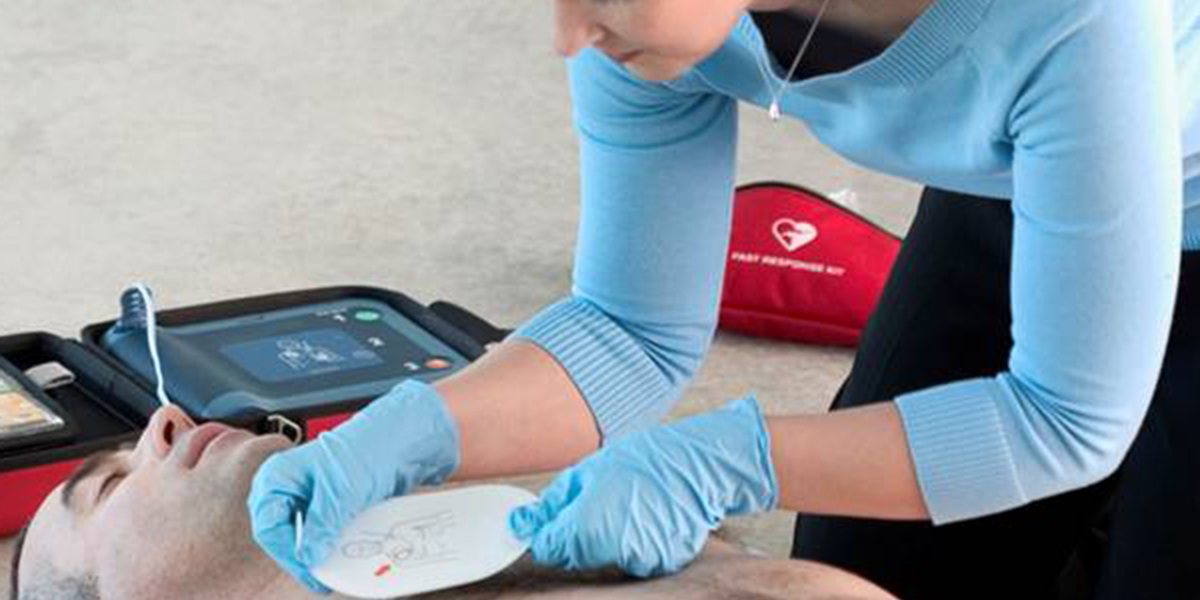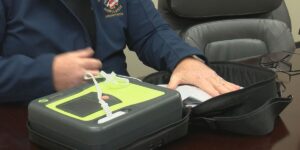When it comes to safeguarding the well-being of your loved ones, having the right tools at your disposal can make all the difference. One such tool that can prove to be a lifesaver in critical situations is an external defibrillator. In this comprehensive guide, we will walk you through everything you need to know about choosing the best external defibrillator for your home or workplace.
Understanding the Importance of External Defibrillators
What Is an External Defibrillator?
An external defibrillator is a portable medical device designed to deliver an electric shock to the heart in cases of sudden cardiac arrest. This shock can restore a normal heartbeat, potentially saving a life.
Why Should You Consider Owning One?
Sudden cardiac arrest can happen to anyone, anywhere, at any time. Having an external defibrillator on hand can significantly increase the chances of survival. Immediate access to this device is crucial, as it can be the difference between life and death.
Key Factors to Consider When Choosing an External Defibrillator
- Ease of Use
One of the most critical aspects to consider is the ease of use. You want a defibrillator that can be used by anyone, even if they have no medical training. Look for models with clear and simple instructions.
- Portability
Portability is essential, especially if you plan to keep the defibrillator in your home or office. A lightweight, compact design ensures that the device can be easily transported to the site of an emergency.
- Battery Life and Maintenance
Check the battery life of the defibrillator, as well as the maintenance requirements. You’ll want a device that has a long battery life and is easy to maintain.
- Durability
Durability is vital in emergency situations. Ensure that the defibrillator is built to withstand various environmental conditions.
- Training and Support
Consider whether the manufacturer provides training resources or customer support. It’s crucial to have access to information and assistance when you need it.
- Cost
While price shouldn’t be the sole factor in your decision, it’s essential to find a defibrillator that fits your budget without compromising on quality.
Maintenance: A Crucial Aspect
Maintenance is a key factor to consider when it comes to external defibrillators. Regular checks and upkeep are essential to ensure that the device remains in optimal working condition. Here are some maintenance tips to keep in mind:
- Regular Self-Tests
Many modern external defibrillators come equipped with self-testing mechanisms. These automated tests help ensure that the device is functioning correctly. It’s crucial to pay attention to any alerts or notifications that may indicate a problem.
- Replace Electrode Pads and Batteries
Electrode pads and batteries have a limited lifespan. Check the manufacturer’s recommendations for when these components need to be replaced. Keeping fresh electrode pads and batteries on hand is vital for the defibrillator to perform effectively.
- Training and Familiarization
Ensure that those who might need to use the defibrillator are trained and familiar with its operation. Regular training sessions can help build confidence in using the device correctly during emergencies.
AED Locations and Accessibility
For public spaces and workplaces, it’s essential to have an Automated External Defibrillator (AED) accessible and easily locatable. Consider the following when deciding where to place the AED:
- Visibility and Accessibility
The AED should be highly visible and accessible to all. It should not be locked away or hidden behind obstacles. Everyone in the vicinity should know where it is located.
- Clear Signage
Install clear and noticeable signage indicating the AED’s location. This ensures that anyone, even those unfamiliar with the environment, can quickly find it during an emergency.
- Legal Requirements
Be aware of any legal requirements or regulations regarding AED placement in your region. Some places may have specific laws governing their installation and accessibility.
Training and Certification
Proper training is paramount when it comes to using an external defibrillator. Whether you are a homeowner, an office manager, or a school administrator, it’s vital to invest in training and certification for your team. Here’s what you should consider:
- Certified Training Programs
Enroll in certified training programs provided by organizations such as the American Heart Association or the Red Cross. These programs teach participants how to perform CPR and use an AED effectively.
- Regular Refresher Courses
Skills can fade over time, so it’s crucial to schedule regular refresher courses. This ensures that individuals remain confident and competent in their ability to respond to cardiac emergencies.

The Impact of Quick Response
Cardiac arrest is a sudden, life-threatening condition that can strike without warning. In such situations, quick response time is of the essence. When you have an external defibrillator at your disposal, you can significantly increase the chances of saving a life.
- Immediate Action Matters
The faster a defibrillator is applied to a person experiencing cardiac arrest, the better their chances of survival. Every minute without defibrillation reduces the likelihood of survival by 7-10%.
- Empowering Bystanders
External defibrillators are designed to be user-friendly. They provide clear instructions and, in many cases, even voice prompts to guide users through the process. This empowers bystanders with the ability to take immediate action while waiting for professional medical help to arrive.
AEDs in Public Spaces
In recent years, there has been a growing trend to place Automated External Defibrillators (AEDs) in public spaces. This initiative aims to make AEDs readily available in places with a higher likelihood of cardiac emergencies. Here are some instances where AEDs can be found:
- Airports
Due to the large number of travelers passing through airports, they are considered prime locations for AED placement. Airports often have AEDs strategically positioned to ensure that assistance can be provided within moments.
- Schools and Universities
Educational institutions recognize the importance of AEDs on their premises. Students, teachers, and staff may experience cardiac events, making AEDs an essential safety measure.
- Sports Facilities
Sports facilities, such as stadiums and gyms, are also common places for AED installation. The physical exertion involved in sports can sometimes trigger cardiac events, and quick access to AEDs can be a game-changer.
- Shopping Malls and Large Retail Stores
With large volumes of shoppers, malls and retail stores are conscious of the need for AEDs. Having an AED accessible can make a significant difference in the event of a sudden cardiac emergency.
Conclusion
Selecting the right external defibrillator is a decision that can make a significant difference in saving lives during cardiac emergencies. When combined with proper maintenance, accessible placement, and comprehensive training, you are well-prepared to handle cardiac arrest situations effectively.
Investing in an external defibrillator for your home or workplace demonstrates a commitment to safety and well-being. Remember, being prepared can be the key to saving a life when every second counts. Make the right choice and ensure that you, your loved ones, and your community are safe and secure.




